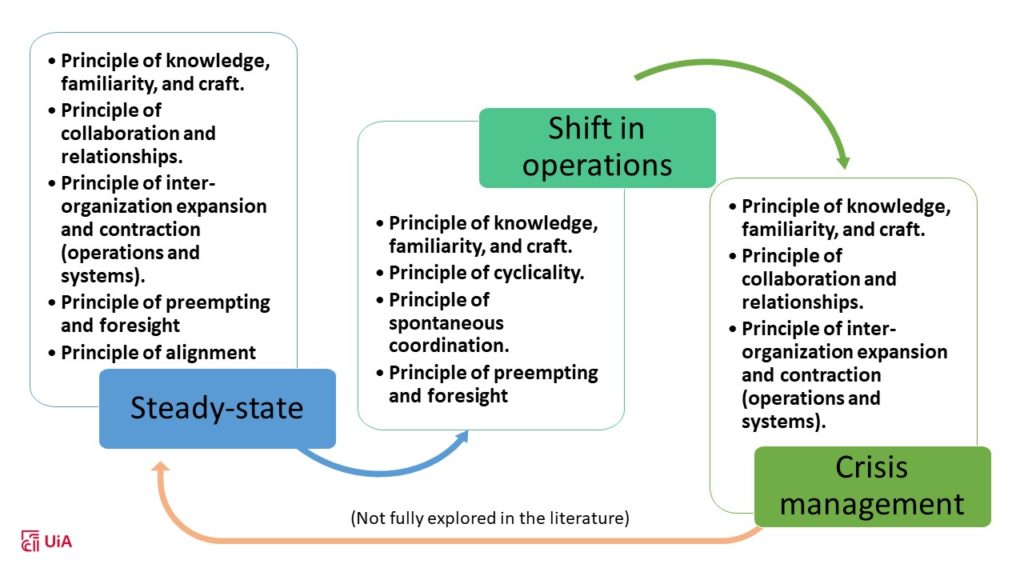
Welcome!
Here is an insiders look to SoMLIS, the study of the use of social media insights in public service organizations.
These posts reveal the research journey mostly through publications and activities performed during the PhD period.
Enjoy!
Social media listening research somlis
PhD research project in the use of social media as a source of information in crisis management

Here is an insiders look to SoMLIS, the study of the use of social media insights in public service organizations.
These posts reveal the research journey mostly through publications and activities performed during the PhD period.
Enjoy!
(Forthcoming)
If we remember correctly, we have established that social media use as a source of information has a cyclical character/behavior (refresh your memory here and here). If we consider social media as a support system for the fulfillment of information requirements, then we can illustrate the changes that PSOs experience while transitioning to and from crisis stages.
However we need to wait for the article to be published to dive into the insights of transitions 🙂
“to be present where the people are”
How do social media analytics support strategies to include vulnerable populations in crisis management?
As the first findings from our empirical study start to emerge, we find that social media analytics:
• Do not address information requirements concerning vulnerable populations
• Present generalized insights (reach, sentiment, topics of conversation, volume)
“A combination of online, offline and collaboration strategies contribute to reaching communities beyond those already following public service organization profiles on social media”
There is a latent need to account for diversity and prioritize vulnerable populations when relying on humans-as-sensors to inform crisis management. Therefore, this article presents identifiable strategies when caring for segmentation, performed by public service organizations while using software tools that aid the process of social media listening. Namely, background work, awareness of segments of the community, formalization of routines, and improvement. In addition, we explain how a combination of online, offline and collaboration strategies contribute to reaching communities beyond those already following public service organization profiles on social media.
There is room for improvement…
Room for Improvement
“Audience segmentation is something that we’re trying to get a little bit better at” (study participant)
…“because they’re having completely different experiences than others” (study participant)
For an insiders look at experiencing segmentation and vulnerable populations through social media analytics take a look at the article.
Happy reading!
Herrera, L. C., & Gjøsæter, T., (2022) “Community Segmentation and Inclusive Social Media Listening“.
Following the idea that social media use in crisis management is cyclical (refresh your memory) our next step was the formulation of guiding principles that support the configuration of social media listening activities in crisis management.

This model is conceptual and the result of a review of academic literature. Therefore, the return to steady-state doesn’t include principles. This would be a task for empirical analysis.
Some of the principles overlap between the phases of the cycle. to find out why check out the article 🙂
Herrera, L. C., Majchrzak, T. A., & Thapa, D. (2022). Principles for the Arrangement of Social Media Listening Practices in Crisis Management. In International Conference on Intelligent Technologies and Applications (pp. 273-286). Springer, Cham.
Social media studies in crisis management are ether very technical or extremely focused on context-driven case studies. Is there a meeting place for these two extremes? To provide a holistic picture, we proposed an ecosystem model that represents entities and relationships that participate in the social media listening process.

For an in-depth analysis of each of the components of the ecosystem, check out the article 😉
Herrera, Lucia Castro, Tim A. Majchrzak, and Devinder Thapa. “Ecosystem of Social Media Listening Practices for Crisis Management.” Conference on e-Business, e-Services and e-Society. Springer, Cham, 2021.
Social media is here to stay! in crises, individuals turn to social media to both look for information and share thoughts, feelings and calls for help. Thus social media is a rich source of information relevant to crisis management. However, studies in crisis communication reveal that the adoption and implementation of social media encounters many barriers such as converting data into actionable information and management of resources dedicated to social media.
Social media in crisis communications has been studied for over 20 years. This article, presents an analysis of the state of the art of research in the area of social media use for crisis management by consolidating key findings that describe the main features of social media adoption in this area.
First, the article focused on the key features of social media adoption in crisis communications, characterized by improvisation and accelerated processes in the midst of a crisis response when the information is scarce. These accelerated processes usually are the result of tight organizational networks, flexible configurations, rapid flow of information for decision making, and online and offline actions.
Then the article identifies the cyclical nature of the social media function that oscillates from non-crisis to crisis state. Worth noting that the return from crisis state to non-crisis has not been thoroughly explored in the literature.

Then the process of social media listening from data extraction to decision making is ilustrated.

Finally, the article concludes with a discussion on the challenges and opportunities for the future of social media activities.
Happy reading!
Herrera, L.C.: Configuring social media listening practices in crisis management. In: 18th ISCRAM (2021)